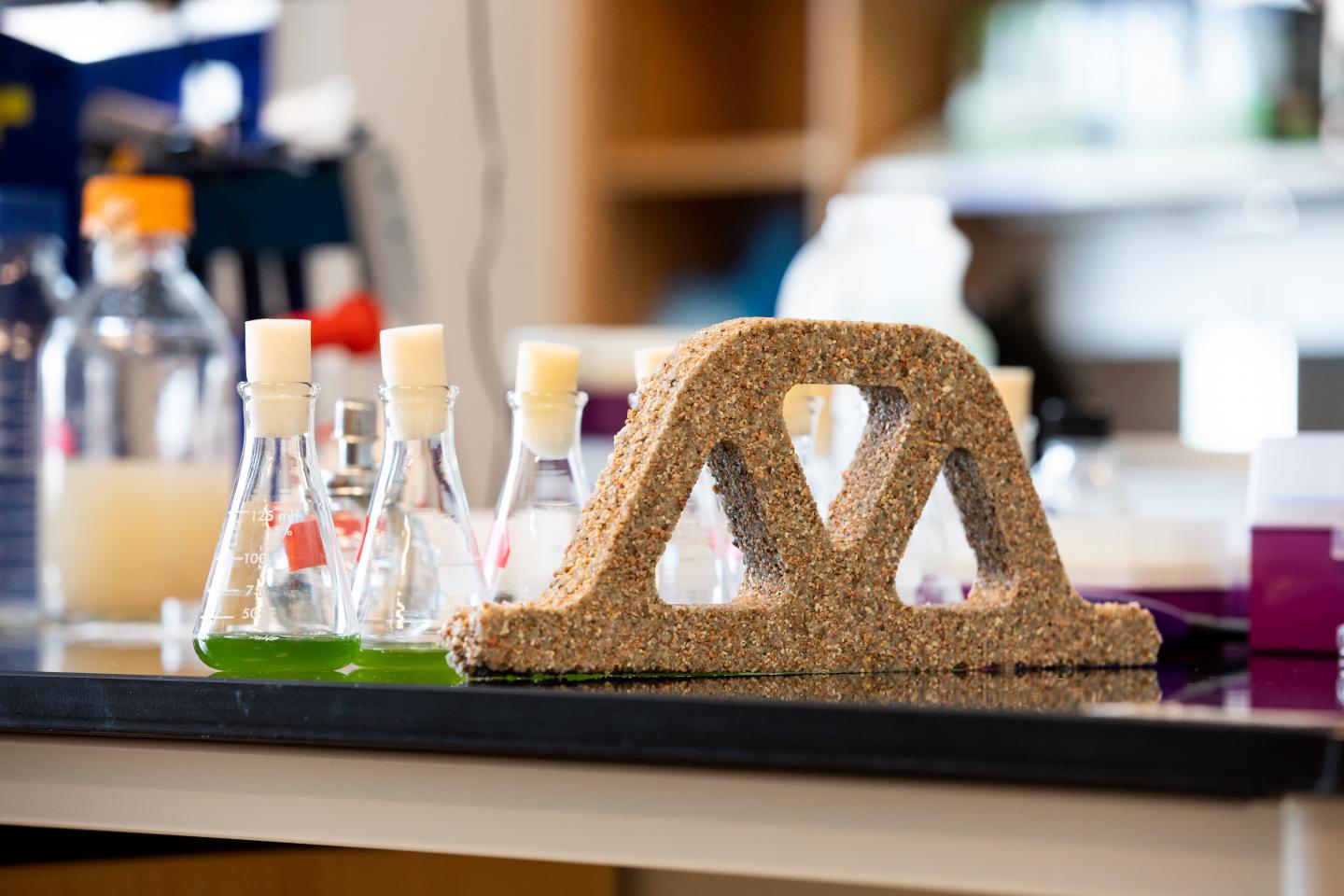This photograph shows green photosynthetic cyanobacteria growing and mineralizing in the sand-hydrogel framework. The living material has similar strength to cement-base mortar.
CREDIT
College of Engineering and Applied Science at Colorado University Boulder
The Latest Updates from Bing News & Google News
Go deeper with Bing News on:
Living material
- This ‘living plastic’ breaks down all by itself, thanks to bacteria
Researchers just created a biodegradable plastic using bacteria spores and thermoplastic polyurethane that could even benefit plants.
- Marriage of synthetic biology and 3D printing produces programmable living materials
Scientists are harnessing cells to make new types of materials that can grow, repair themselves and even respond to their environment. These solid "engineered living materials" are made by embedding ...
- Engineered living materials: Scientists 3D print with bio-ink made from tobacco cells
Also known as EPLMs, “engineered plant living materials” are a new frontier that marries synthetic biology and 3D printing, an invention that’s inspired many improvements to the mechanism itself as ...
- Crafting Programmable Living Materials With Synthetic Biology & 3D Printing
New study uses 3D printing and genetically modified plant cells to create complex, self-repairing materials that could revolutionize biomanufacturing and construction. Scientists are harnessing cells ...
- Revolutionary new ‘living plastic’ could slash environmental damage
By Stephen Beech via SWNS A revolutionary new "living plastic" could slash damage to the environment, claims a new study. The biodegradable material houses bacterial spores that help it break ...
Go deeper with Google Headlines on:
Living material
[google_news title=”” keyword=”living material” num_posts=”5″ blurb_length=”0″ show_thumb=”left”]
Go deeper with Bing News on:
Green living material
- The rise of sustainable building materials—a blueprint for startup success
Due to increasing awareness of climate change and environmental degradation, consumers, developers, and policymakers are seeking sustainable options that reduce carbon footprints and minimise ...
- How Sustainable Design Is Elevating Multifamily Living Spaces
Experts from CRG, Marquette Cos. and Optima highlight how sustainable design principles are enhancing resident well-being and pave the way for a greener future in multifamily housing.
- Living Akamai: Redefining Urban Living
Christine Camp, the mastermind behind the Avalon Group, joins Kay Mukaigawa for another edition of Living Akamai to unveil Modea, their latest groundbreaking venture in urban development. Modea ...
- Bacteria 'nanowires' could help develop green electronics
Engineered protein filaments originally produced by bacteria have been modified by scientists to conduct electricity. In a study published recently in the journal Small, researchers revealed that ...
- Editorial: Living shoreline plan is smart move for town
Planting mangroves is the most effective and efficient way to establish a living shoreline, Mrs. Frisbie wrote, noting that red, white, and black mangroves, all native to Florida, contribute to the ...
Go deeper with Google Headlines on:
Green living material
[google_news title=”” keyword=”green living material” num_posts=”5″ blurb_length=”0″ show_thumb=”left”]










